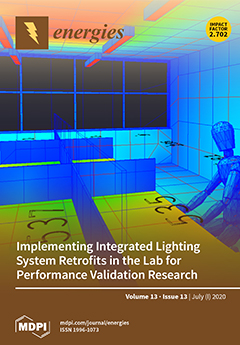The aim of this study was to investigate the adsorption of Cu(II) and Zn(II) onto apple tree branches biochar (BC) produced at 300, 400, 500 and 600 °C (BC300, BC400, BC500, and BC600), respectively. The effect of adsorbent dosage, pH value, contact time,
[...] Read more.
The aim of this study was to investigate the adsorption of Cu(II) and Zn(II) onto apple tree branches biochar (BC) produced at 300, 400, 500 and 600 °C (BC300, BC400, BC500, and BC600), respectively. The effect of adsorbent dosage, pH value, contact time, initial concentration of Cu(II) or Zn(II), and temperature on the adsorption process were investigated. The result showed that 5 g BC·L
−1 was the optimal dosage to remove Cu(II) and Zn(II) from wastewater and the maximum adsorption efficiency was achieved at a pH of 5.0 for all the BCs when the initial concentration of Cu(II) and Zn(II) were 64 and 65 mg L
−1, respectively. Adsorption kinetics and isotherm experiments showed that the pseudo-second order equation and the Langmuir isotherm could best describe the adsorption process, indicating that the adsorption of Cu(II) and Zn(II) onto BCs were monolayer processes and chemisorption was the rate limiting step. The values of ΔG
0 for the absorption of Cu(II) and Zn(II) on all BCs were negative, while the values of ΔH
0 were positive, suggesting that the absorption was a spontaneous endothermic process. The mechanisms of BC adsorption of metal ions adsorption include surface precipitation, ion exchange, and minor contribution by cation-π interaction. BC500 had highest Cu(II) and Zn(II) adsorption capacity under various conditions (except at pH 2.0). The maximum adsorption capacities of Cu(II) and Zn(II) on BC500 were 11.41 and 10.22 mg·g
−1, respectively. Therefore, BC derived from apple tree branches produced at 500 °C can be used as an adsorbent to remove Cu(II) and Zn(II) from wastewater.
Full article





